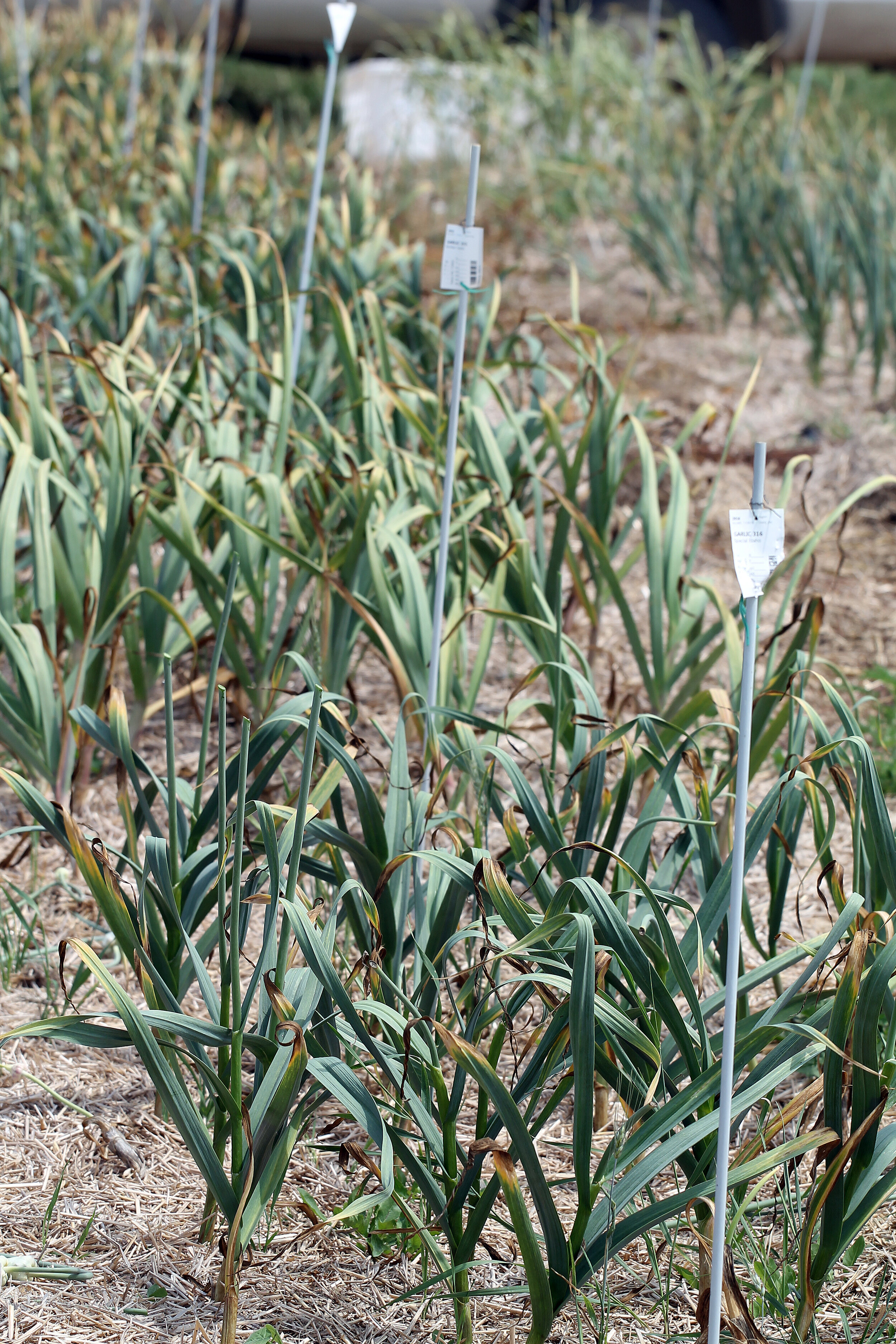Q&A with John Swenson, garlic aficionado
/John Swenson enjoys a laugh during the 2019 Conference and Campout at Seed Savers Exchange’s Heritage Farm.
John Swenson of Glenview, Illinois, cultivated a love of gardening at an early age while tending a small garden plot of radishes, beans, and carrots (but nary a garlic bulb!) alongside his father, Merwin, in the family’s backyard garden. “What hooked me on gardening?” he muses. “I guess I was intrigued by the idea of growing something I could both eat and share.”
Since the mid-1970s, John has been hooked on all things Allium sativum—its health benefits (allicin, the fragrant compound in garlic, has proven medicinal qualities), the way it reproduces (“I had never seen garlic grow before...the scapes that produced bulbils—I was just fascinated by that process,” he says), and, of course, its taste. (“I have seven or eight cookbooks on onions and garlic, so I just pick a recipe I think I would like and automatically quadruple the amount of garlic,” he once told a Chicago Tribune reporter.)
Ever the scholar, John continued to dig deeper into the subject of garlic, devouring any and all books he could find about the species and planting every variety he could get his hands on, which wasn’t many at the time. (Just 18 garlic varieties circulated in the domestic seed trade in 1987.)
By 1989 he had cultivated such a breadth and depth of knowledge about garlic that the U.S. Department of Agriculture invited him to join a small international team of scientists charged with collecting native alliums in Russia and Central Asia. Their quest covered 8,000 miles—territory that encompassed both remote terrain and bustling marketplaces—and yielded hundreds of varieties of garlic, onion, and shallots, including 120 varieties of garlic alone. Those varieties, many of which John later acquired from the USDA and carefully stewarded in his Illinois garden, are the foundation of Seed Savers Exchange’s extensive garlic collection. Since the 1990s, John has donated 150 varieties to the organization’s seed bank, including his beloved ‘Samarkand,’ a “moderately spicy” hardneck he came across in Uzbekistan.
His generous sharing of his prized garlic collection established him as one of the organization’s 41 Legacy Donors, several of whom (including John) were profiled in an online exhibit supported by the 1772 Foundation.
Today, at 92 years young, he continues to plant, tend, and harvest about 30 varieties of garlic each year. “My curiosity has not waned with age,” says John. “I still wonder what it is that I don’t know.”
Rows of garlic stand ready for harvest at Seed Savers Exchange’s Heritage Farm.
What inspired you to start growing garlic?
In the mid-1970s, I was scouring seed catalogs for shallots, a vegetable I wanted to add to my garden plot, when I spotted an ad for rocambole (a hardneck garlic) that piqued my curiosity. The ad actually read, ‘We don’t know what this is.’ How could I resist that?
What is your favorite garlic variety to grow, and why is it your favorite?
I don’t have a favorite. No one should be able to say “favorite” when talking about garlic because there’s so much good stuff out there!
Can you share one fun fact about garlic?
I have found that the most complex flavors in garlic are associated with varieties that have purple wrappers.
Can you provide five tips for growing happy, healthy garlic?
Monitor the soil temperature. When the soil temperature drops to 60 degrees Fahrenheit, start planting your garlic. Science has shown that to be the optimum temperature for the termination of roots from the stem of the garlic clove. For most of North America, that’s early October.
Use labeling materials that last, especially in areas with harsh winters. Labels made of zinc with stakes of stainless wire will not be heaved up in the freeze-thaw cycle. Using Sharpie oil-based paint markers will ensure the variety names remain legible through demanding winter weather.
If you remove the scape of the plant at the proper time, the garlic bulb will grow larger (how much larger depends on the variety). If you remove the scapes early, they will be tender enough to use in stir fry or make a pesto. The scapes are at their best from when they first emerge until they start to bend.
When harvesting garlic, dig up the bulbs; do not pull them up. Then lay them by their markers and let them lie exposed for two-three days to start the curing process (which transforms the flavor profile of the bulb). When storing, be sure to keep bulbs in a brown paper bag in a cool, dry place.
Using the bulbils (tiny, undivided bulbs produced in the scapes of hardneck garlic) of a favorite garlic will allow you to increase your stock more rapidly than by replanting the cloves of bulbs. The whole process takes two growing seasons. If you plant bulbils to create rounds for next season’s crop, be sure to mark both ends of the row in which you plant them. Otherwise, when the leaves wither, they quickly disappear, and you will be unable to find your new planting stock.















